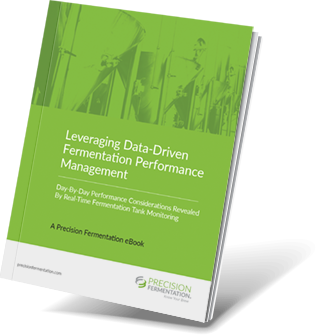Ferment Hot, Fast, and Clean Beer with Kveik Norweigan Farmhouse Yeast Strains
 There’s a trending not-so-new category of super-yeasts in town and if you haven’t tasted or brewed with them yet, you likely will soon. Called kveik (kuh-vike) yeasts, they hail from Norway, and their fans say that almost anything your yeast can do, kveik yeast can probably do better.
There’s a trending not-so-new category of super-yeasts in town and if you haven’t tasted or brewed with them yet, you likely will soon. Called kveik (kuh-vike) yeasts, they hail from Norway, and their fans say that almost anything your yeast can do, kveik yeast can probably do better.
Why Use Kveik Farmhouse Yeast Strains?
“For the brewer it’s awesome because it ferments fast and hot yet so clean you can make most ordinary beer styles with it. The beer doesn’t need to mature very long, either, so you can go from pitch to selling in a week,” says Lars Marius Garshol, a blogger who has acquired a cult following in the United States for collecting and promoting 40 kveik yeast cultures he’s found on family farms across Norway.
“For normal people,” Garshol continues, “it’s awesome because of this back story of a super yeast surviving ‘hidden’ in western Norway, passed on from father to son for untold generations.”
Save Time By Fermenting with Kveik Yeast
In total, around 100 single-strain and mixed kveik yeast cultures are sold commercially around the world. These literal farmhouse yeasts, which tend to give off fruity flavors and lend themselves nicely to a vast array of styles but particularly NEIPAs, have remarkably been documented fermenting at temperatures as high as 107℉ without any unwanted off-flavors from fermenting too hot, as witnessed by Garshol, Chicago-based Omega Yeast and others. Because they can ferment so hot, they can also ferment fast. Really fast.
As Garshol says, brewers using kveik yeasts have cut their fermentation time in half — from two weeks down to one — and he reports watching a dried and dormant strain start visibly fermenting within 30 minutes.
Chicago-based Omega Yeast first brought Garshol’s kveik yeast cultures to this country and currently sells five variations. Omega Director of Research and Development Dr. Laura Burns explains that the high heat jump-starts the chemical reactions in fermentation.
“Why kveik fermentations occur very fast at higher temperature ranges is a similar notion as why lager fermentations occur slowly at lower temperature ranges. In general, enzymatic reactions will be faster at high and slower at low temperatures,” she says, noting that Omega recommends fermenting between 83-98F, where the yeast strains show their peak growth rates and performance.
It goes without saying that a faster ferment means a more efficient ferment. That, of course, means quicker tank turnover for you.
The Challenges of Fermenting with Kveik Farmhouse Yeast Strains
Unfortunately, a speedy fermentation also brings along the risk that things can go south more quickly than you may be used to. Plus, you’ll have to remain very vigilant if you want to collect data to set benchmarks for future kveik beer recipes.
So while you might check your fermentation once or twice a day when brewing with a standard yeast, you’ll likely find you need to pull your kveik samples much more often.
Got Kveik? Get BrewMonitor®
The BrewMonitor System can become your most reliable and expeditious assistant as you brew with kveik. Instead of manually conducting one or two daily measurements, BrewMonitor samples more than 1,000 data points per day. Not only does this free up your labor (especially because you can monitor the readings from any internet-connected device in any location), it ensures data volume and accuracy that is not possible through manual sampling.
Keeping this visibility and precision in mind, it’s clear that BrewMonitor helps guarantee quality and consistency from batch to batch. Immediately learn whether your brew is on or off track and use your best kveik yeast beer batch to set parameters for future kveik yeast recipes, all from a unified web-based interface.
Free eBook: Leveraging Data-Driven Fermentation Performance Management
Can fermentation management be improved, as a process? This eBook explores, in detail, how fermentation performance data analysis helps elevate product and business outcomes in a modern brewery, whether brewpub, microbrewery or regional craft brewer.
You will learn:
- Day-by-day performance considerations – learned through the extensive examination of real-time fermentation tank data.
- Key recommendations from the Precision Fermentation science team at each major step of fermentation – “Day zero” (i.e. before you pitch your yeast), the first 24 hours, and day two through the end of fermentation.
- Best practices – Activity to watch out for, broken down by each key measurement – Dissolved oxygen, gravity, pH, pressure, internal/external temperature, and conductivity.
- Key findings that can help you solve problems and improve your results.


